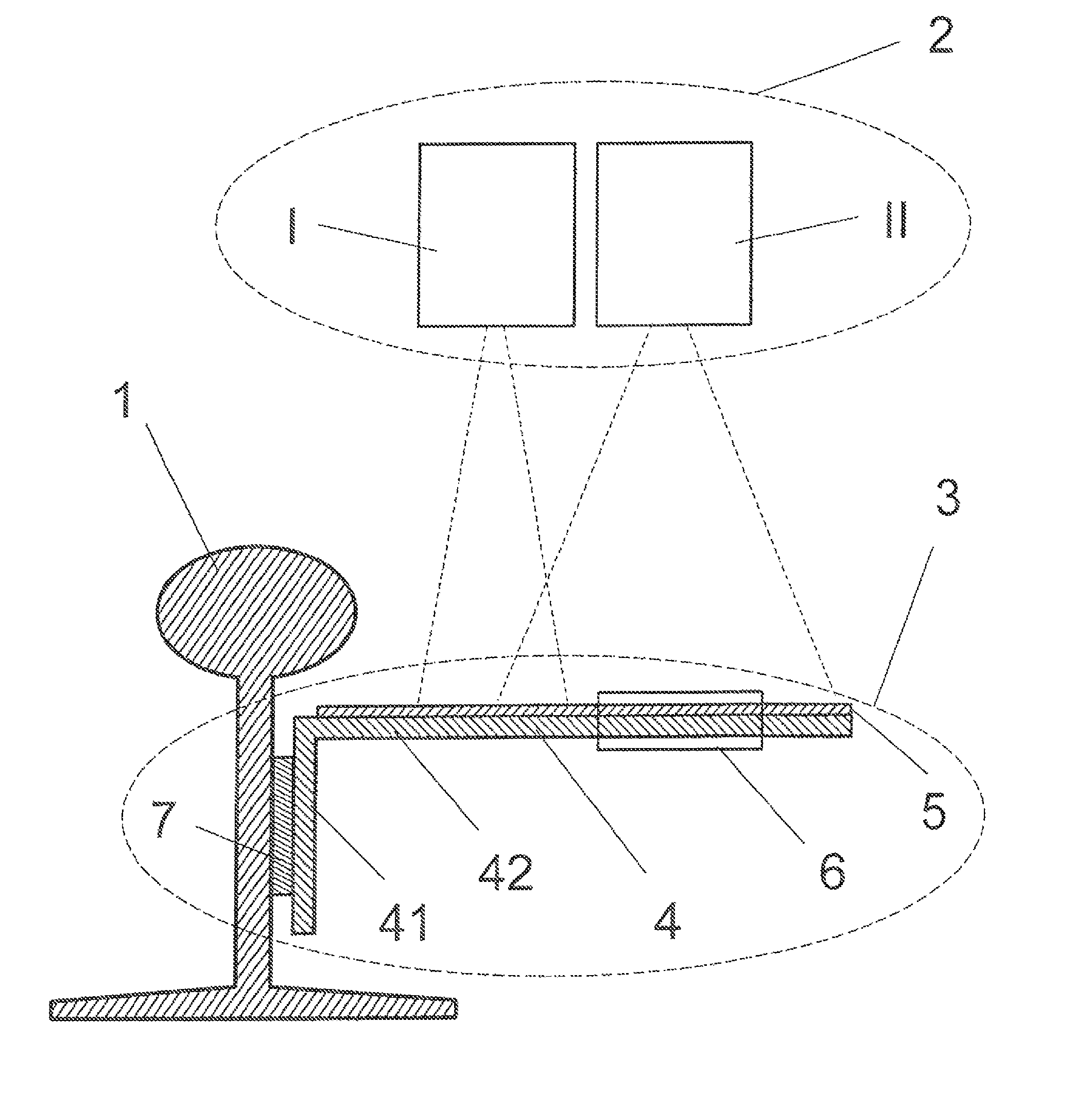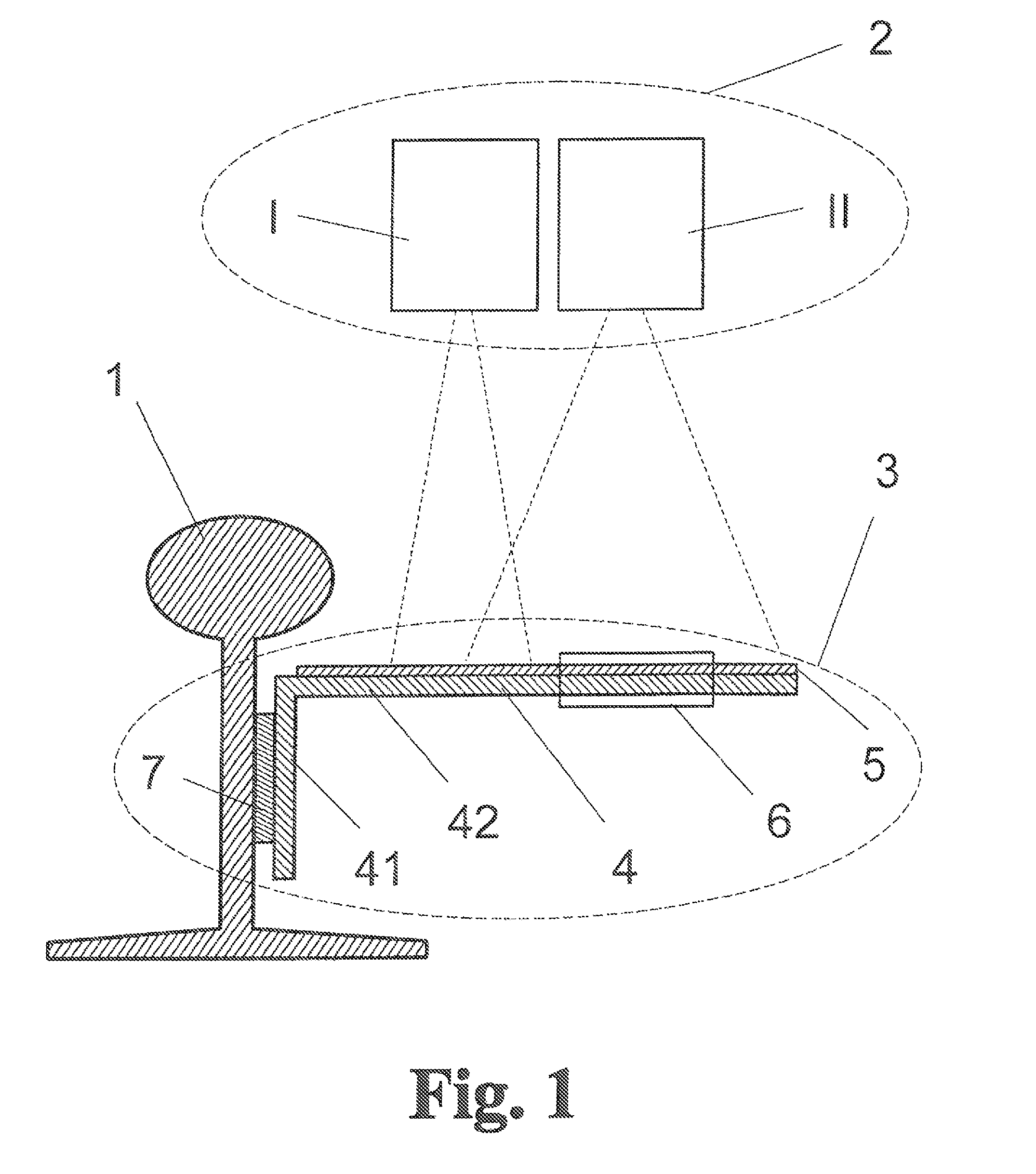Arrangement for measuring sections of track for the purpose of maintaining railroad tracks
a technology for maintaining railroad tracks and tracks, applied in track maintainence, railway tracks, instruments, etc., can solve the problems of insufficient reproducibility of computer-aided measuring apparatuses in current use, inability to freely choose track positions, and insufficient accuracy of automatic measurement by measuring trains. to achieve the effect of reliable and positionally accurate section determination
- Summary
- Abstract
- Description
- Claims
- Application Information
AI Technical Summary
Benefits of technology
Problems solved by technology
Method used
Image
Examples
Embodiment Construction
[0041]It is to be understood that the figures and descriptions of the present invention have been simplified to illustrate elements that are relevant for a clear understanding of the present invention, while eliminating, for purposes of clarity, many other elements which are conventional in this art. Those of ordinary skill in the art will recognize that other elements are desirable for implementing the present invention. However, because such elements are well known in the art, and because they do not facilitate a better understanding of the present invention, a discussion of such elements is not provided herein.
[0042]The present invention will now be described in detail on the basis of exemplary embodiments.
[0043]As is shown schematically in FIG. 1, the basic arrangement according to the invention comprises a measuring point 3 which is detachably arranged at a rail 1 (shown in a conventionalized manner as a Vignoles rail). A sensor unit 2 fastened to a work machine 8 is guided ove...
PUM
| Property | Measurement | Unit |
|---|---|---|
| distance | aaaaa | aaaaa |
| diameter | aaaaa | aaaaa |
| lengths | aaaaa | aaaaa |
Abstract
Description
Claims
Application Information
 Login to View More
Login to View More - R&D
- Intellectual Property
- Life Sciences
- Materials
- Tech Scout
- Unparalleled Data Quality
- Higher Quality Content
- 60% Fewer Hallucinations
Browse by: Latest US Patents, China's latest patents, Technical Efficacy Thesaurus, Application Domain, Technology Topic, Popular Technical Reports.
© 2025 PatSnap. All rights reserved.Legal|Privacy policy|Modern Slavery Act Transparency Statement|Sitemap|About US| Contact US: help@patsnap.com



